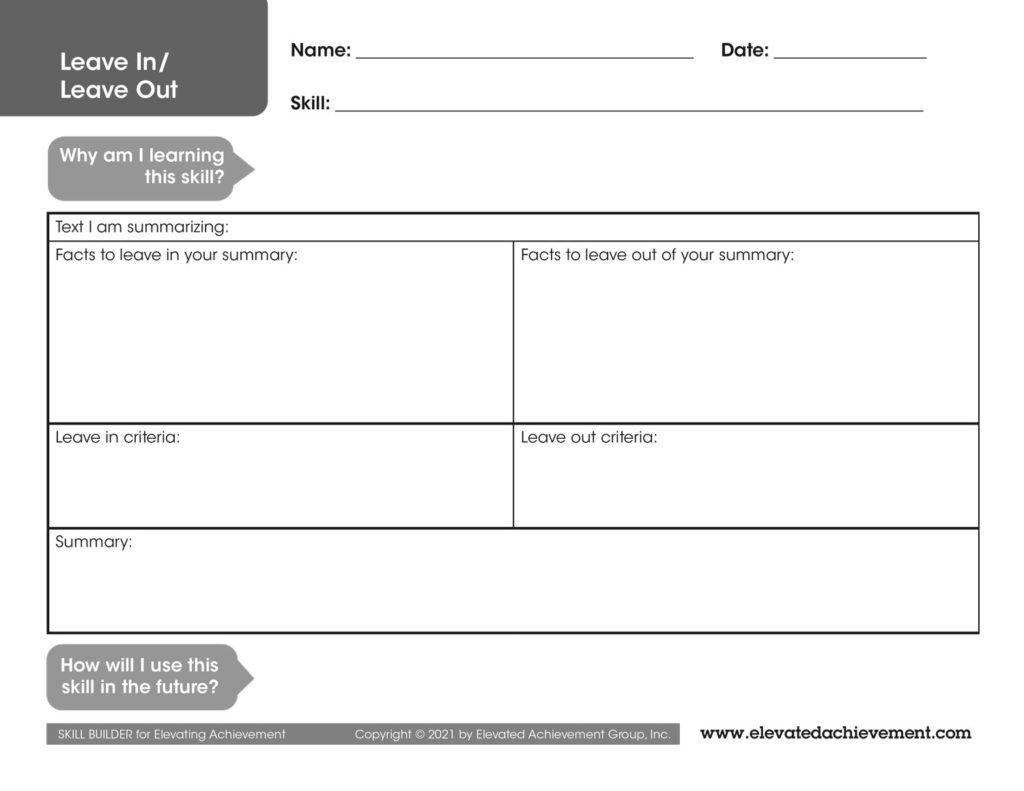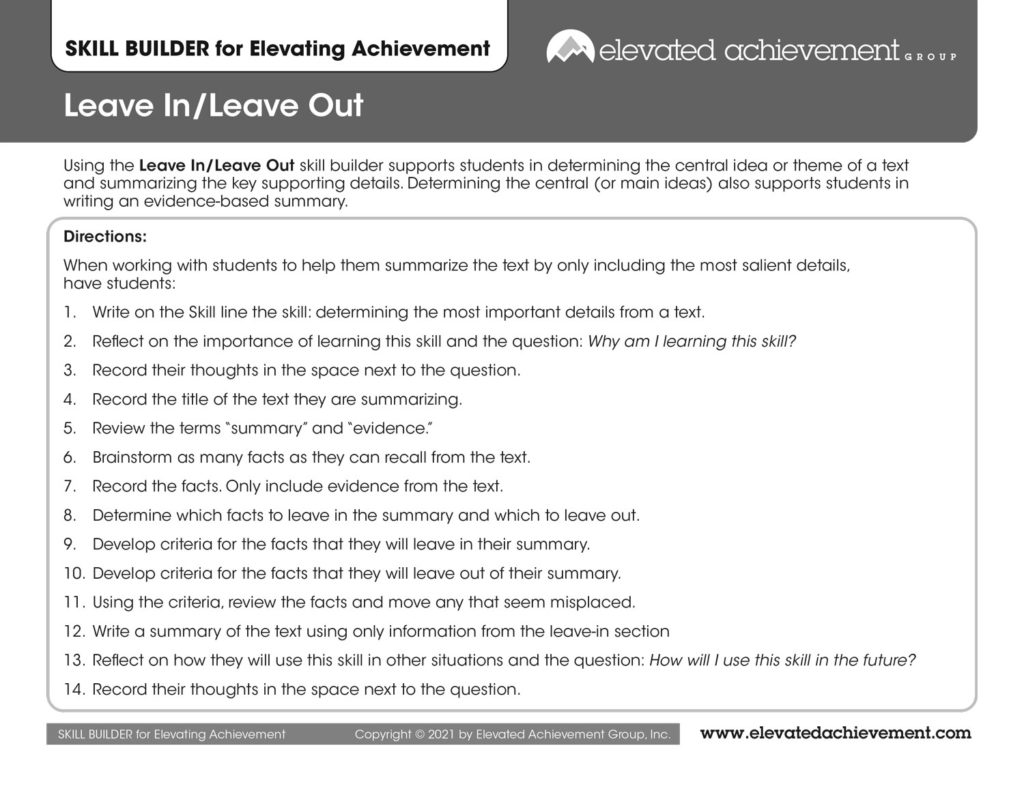Share this article.
Deep learning—of anything—strong reading comprehension skills. One of the most obvious ways to check if the text has been understood is to summarize the most salient points in the text. Summarizing helps a reader solidify the information in their brain.
Research bears this out.
“As the most cherished skill in the world of language arts, comprehension is also crucial to understanding texts in every other subject area. Although the process of comprehension is complex, at its core, comprehension is based on summarizing—restating content in a succinct manner that highlights the most crucial information.
During the mid-1970s and early 1980s, the work of cognitive psychologists (see Kintsch, 1974; van Dijk, 1980; van Dijk & Kintsch, 1983) made this clear.
In a series of studies with teachers, we determined that summarizing strategies have a substantial average effect on student understanding of academic content. Across 17 experimental/control studies that teachers conducted, we found that using summarizing strategies, on average, increased students’ understanding of content by 19 percentile points (see Haystead & Marzano, 2009).”
What Does It Mean to Be a Summarizer of Text?
For our students to be successful readers they must take ownership of their reading and of the reading comprehension skill of summarizing. But ownership for students needs to be more than just doing the skill—it is recognizing the importance of the thinking behind the summarizing and turning themselves into a summarizer of text.
 In other words, students must move from just summarizing to understanding how to use key details and identify the main idea to owning the role of summarizer whenever they are accessing information from the text.
In other words, students must move from just summarizing to understanding how to use key details and identify the main idea to owning the role of summarizer whenever they are accessing information from the text.
A summarizer thinks like this, “When I read, I need to summarize the text. I should be able to explain what I just read using my own words. If I can’t, I know I must go back and reread the passage. I identify the main idea, and I only tell the key details. Sometimes I try to summarize in ten words or less. I make sure I know what the author is telling me before I take my notes. Summarizing helps me solidify the information in my brain.”
How Can Your Students Become Summarizers?
Teaching students to become clarifiers can be done Teaching students to become summarizers can be done in a variety of ways. One way to help students practice the role of summarizer is to use the following graphic organizer as a tool for building this skill.
 Here are the directions you can use with your students.
Here are the directions you can use with your students.
 Click here to download this Skill Builder and its directions.
Click here to download this Skill Builder and its directions.
So, Why Develop Summarizers of Text?
 Comprehension is stronger when students have an opportunity to summarize what they are reading and talk about it. Talking about the reading is stronger when students are able to not only ask questions, but to also clarify ideas, restate the facts, and share what they think they will be reading next. The ability to effectively question, clarify, summarize, and predict is stronger when readers are explicitly taught each of these skills. That’s Reciprocal Teaching, and it is an instructional strategy that not only promotes deep reading, but also student ownership of learning.
Comprehension is stronger when students have an opportunity to summarize what they are reading and talk about it. Talking about the reading is stronger when students are able to not only ask questions, but to also clarify ideas, restate the facts, and share what they think they will be reading next. The ability to effectively question, clarify, summarize, and predict is stronger when readers are explicitly taught each of these skills. That’s Reciprocal Teaching, and it is an instructional strategy that not only promotes deep reading, but also student ownership of learning.
Continue the Learning
Check out these articles and resources to continue your learning about this topic…
The Learning Brief
In this article you learned…
- Why deep learning requires deep reading.
- To ensure accurate reading comprehension, students must move from just summarizing to understanding how to use key details and identify the main idea to owning the role of summarizer whenever they are accessing information from the text.
- Determining the most important details in order to summarize a text is a reading skill that can and should be taught.
Can you imagine building an environment full of motivated, engaged, and eager students who own their learning?
We can.

